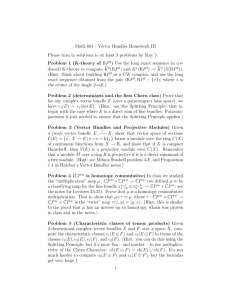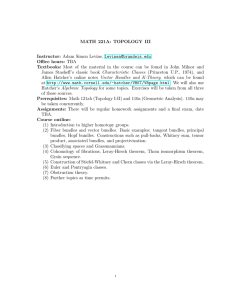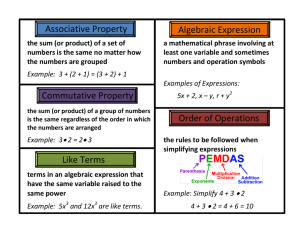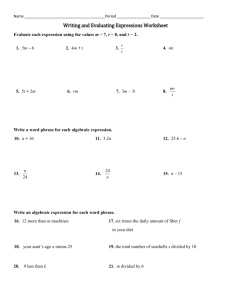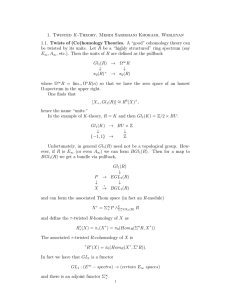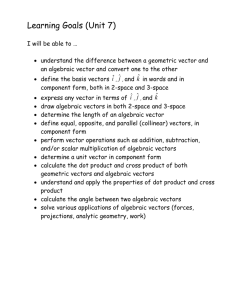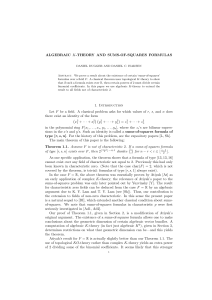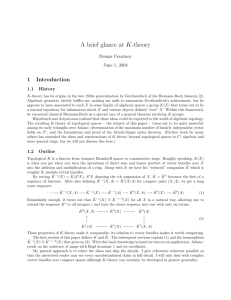Course description
advertisement
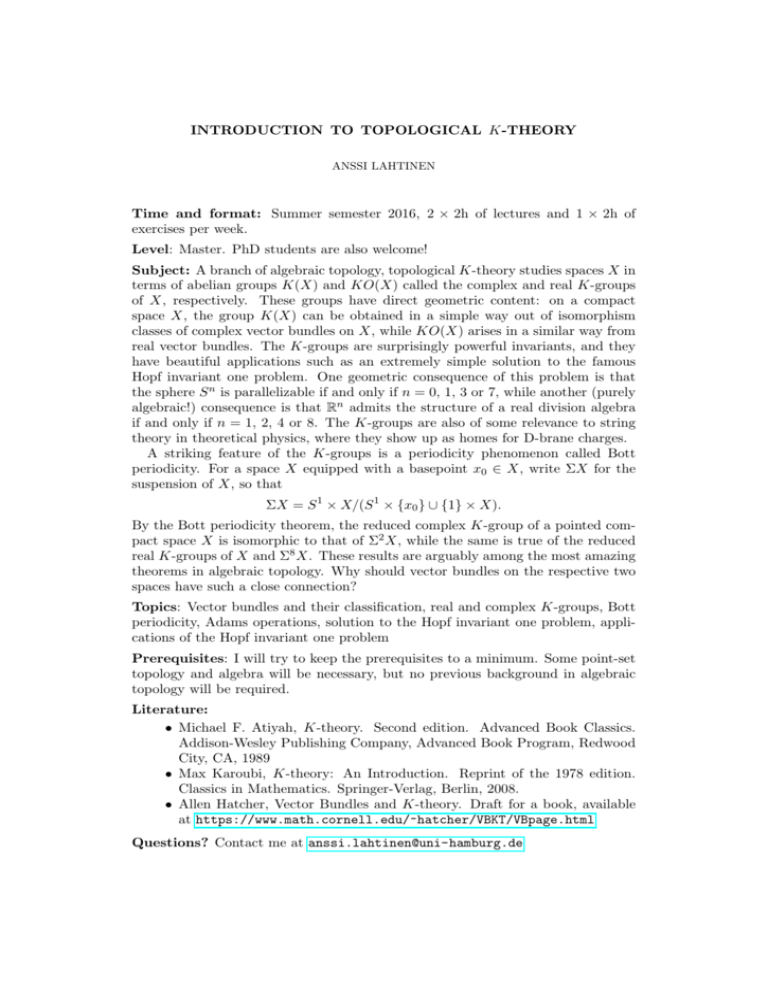
INTRODUCTION TO TOPOLOGICAL K-THEORY
ANSSI LAHTINEN
Time and format: Summer semester 2016, 2 × 2h of lectures and 1 × 2h of
exercises per week.
Level: Master. PhD students are also welcome!
Subject: A branch of algebraic topology, topological K-theory studies spaces X in
terms of abelian groups K(X) and KO(X) called the complex and real K-groups
of X, respectively. These groups have direct geometric content: on a compact
space X, the group K(X) can be obtained in a simple way out of isomorphism
classes of complex vector bundles on X, while KO(X) arises in a similar way from
real vector bundles. The K-groups are surprisingly powerful invariants, and they
have beautiful applications such as an extremely simple solution to the famous
Hopf invariant one problem. One geometric consequence of this problem is that
the sphere S n is parallelizable if and only if n = 0, 1, 3 or 7, while another (purely
algebraic!) consequence is that Rn admits the structure of a real division algebra
if and only if n = 1, 2, 4 or 8. The K-groups are also of some relevance to string
theory in theoretical physics, where they show up as homes for D-brane charges.
A striking feature of the K-groups is a periodicity phenomenon called Bott
periodicity. For a space X equipped with a basepoint x0 ∈ X, write ΣX for the
suspension of X, so that
ΣX = S 1 × X/(S 1 × {x0 } ∪ {1} × X).
By the Bott periodicity theorem, the reduced complex K-group of a pointed compact space X is isomorphic to that of Σ2 X, while the same is true of the reduced
real K-groups of X and Σ8 X. These results are arguably among the most amazing
theorems in algebraic topology. Why should vector bundles on the respective two
spaces have such a close connection?
Topics: Vector bundles and their classification, real and complex K-groups, Bott
periodicity, Adams operations, solution to the Hopf invariant one problem, applications of the Hopf invariant one problem
Prerequisites: I will try to keep the prerequisites to a minimum. Some point-set
topology and algebra will be necessary, but no previous background in algebraic
topology will be required.
Literature:
• Michael F. Atiyah, K-theory. Second edition. Advanced Book Classics.
Addison-Wesley Publishing Company, Advanced Book Program, Redwood
City, CA, 1989
• Max Karoubi, K-theory: An Introduction. Reprint of the 1978 edition.
Classics in Mathematics. Springer-Verlag, Berlin, 2008.
• Allen Hatcher, Vector Bundles and K-theory. Draft for a book, available
at https://www.math.cornell.edu/~hatcher/VBKT/VBpage.html
Questions? Contact me at anssi.lahtinen@uni-hamburg.de
